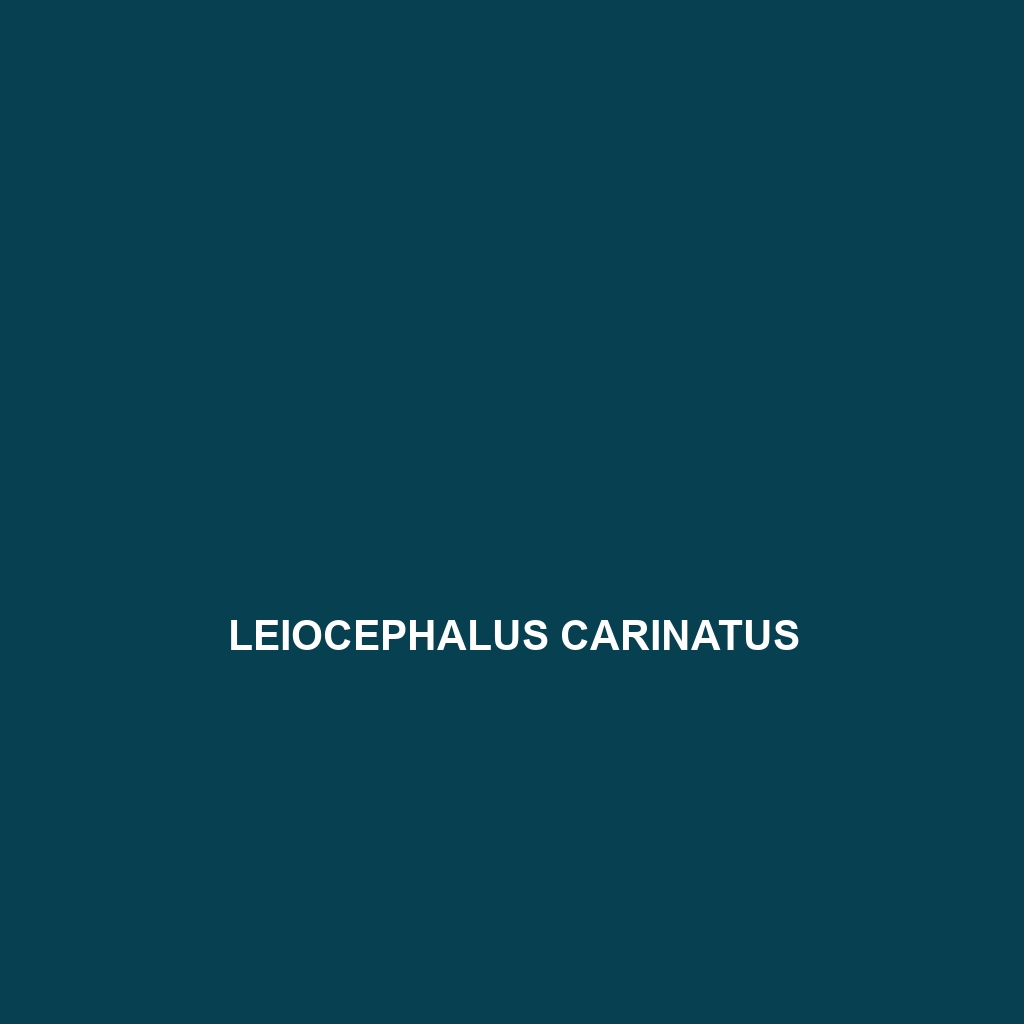Common Name
Leiocephalus carinatus
Scientific Name
Leiocephalus carinatus
Habitat
Leiocephalus carinatus is primarily found in the tropical and subtropical regions of Central America and the Caribbean. This species thrives in a variety of habitats, including rainforests, savannas, and temperate forests. It can often be spotted basking on rocks, logs, or trees in sunny areas that provide shelter from predators. Environmental conditions such as humidity levels, vegetation density, and access to water sources play a critical role in the suitability of habitats for Leiocephalus carinatus. This adaptable species is remarkably resilient and can also inhabit disturbed areas, showing a preference for environments where it can find abundant food and sun exposure.
Physical Characteristics
Leiocephalus carinatus, commonly known as the “curly-tailed lizard,” exhibits distinct physical traits that make it easily identifiable. Adult specimens typically reach lengths of about 10 to 12 inches, including their long, slender tails. Their coloration ranges from brown to gray, with intricate patterns that provide effective camouflage within their natural habitats. The most notable feature of Leiocephalus carinatus is its slightly flattened, spiny tail that curls upward, serving as a unique adaptation for defense against predators. Additionally, they have sharp claws and a streamlined body that enhance their climbing abilities, allowing them to navigate through treetop canopies or rocky outcrops.
Behavior
The behavior of Leiocephalus carinatus is fascinating and complex. These lizards are generally diurnal, meaning they are most active during the day. Their social interactions can be quite dynamic, especially during the mating season when males engage in elaborate displays to attract females. Notably, Leiocephalus carinatus is known for its territorial behavior, with males often establishing and defending their specific areas from intruders. This species exhibits a unique nocturnal behavior at times when they seek shelter in crevices or under leaf litter during particularly hot days. Their ability to adapt their activity patterns according to environmental conditions showcases their resilience.
Diet
Leiocephalus carinatus is primarily an omnivore, feeding on a diverse diet that includes insects, small invertebrates, fruits, and foliage. Their feeding habits are opportunistic, allowing them to take advantage of whatever food sources are readily available. Ants, beetles, and caterpillars constitute a significant portion of their diet, while they may also consume softer plant material when insect prey is scarce. This varied diet not only sustains their energy levels but also plays a critical role in maintaining ecological balance within their environment.
Reproduction
During the breeding season, which typically occurs in the warmer months, Leiocephalus carinatus engages in elaborate mating rituals. Males perform displays that involve push-ups, head bobbing, and color changes to attract females. After mating, the female lays clutches of 3 to 10 eggs in sandy or loamy soil, and the gestation period lasts around 6 to 8 weeks. The hatchlings are independent from birth and exhibit similar physical characteristics to adults but are considerably smaller. Parental care is generally absent in this species, as the young are adapted to fend for themselves from the moment they emerge.
Conservation Status
The conservation status of Leiocephalus carinatus is currently classified as Least Concern according to the IUCN Red List. This designation reflects the species’ widespread distribution and stable population numbers. However, like many species, Leiocephalus carinatus faces threats from habitat destruction, climate change, and invasive species. Conservation efforts are essential to monitor their populations and protect their natural habitats from degradation.
Interesting Facts
One of the most remarkable adaptations of Leiocephalus carinatus is its ability to shed its tail when threatened, a process known as autotomy. This allows the lizard to escape from predators while the detached tail continues to wiggle, distracting the attacker. Additionally, Leiocephalus carinatus exhibits a fascinating ability to change color under certain lighting conditions, which aids in camouflage. The resilience and adaptability of this species make it a subject of interest for herpetologists studying evolution and survival strategies in reptiles.
Role in Ecosystem
Leiocephalus carinatus plays a significant role in the ecosystem as both a predator and prey. By feeding on various insects, it helps control pest populations, contributing to ecological balance. Additionally, as a food source for larger predators, including birds of prey and mammals, it is vital in the food web. This species may also act as a pollinator for certain plants, aiding in seed dispersal and promoting biodiversity within their habitat. The health of the populations of Leiocephalus carinatus is indicative of the overall health of the ecosystems they inhabit.
